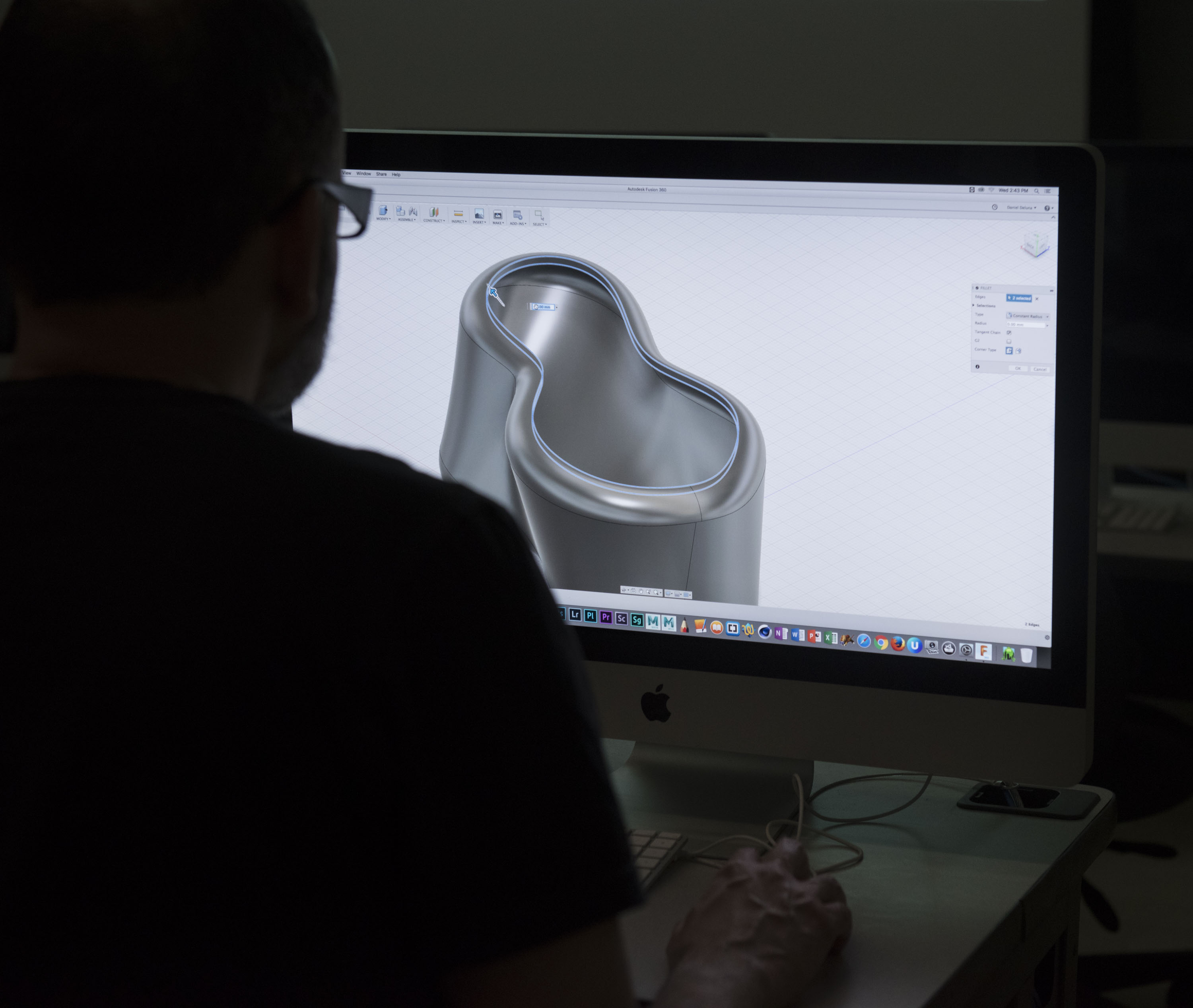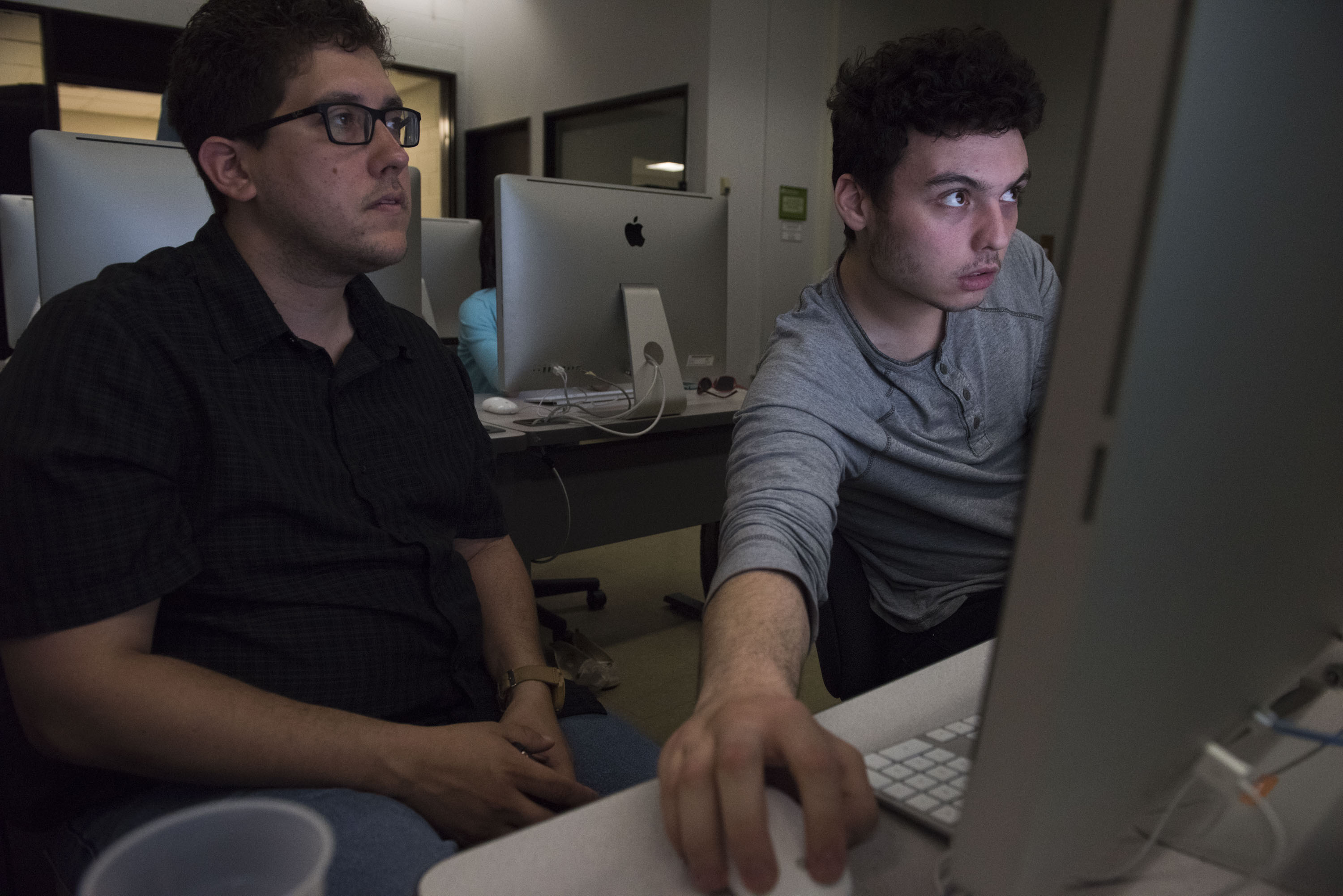RIT, Autodesk fuse together for innovative software workshop
Thanks to a partnership between RIT and a well-known software company, a few dozen College of Art and Design faculty and staff members received training on how to use a next-generation computing tool last week.
A representative from Autodesk, the global business that creates innovative design software, made his way — or, perhaps more accurately, returned — to Gannett Hall May 24 and 25 to lead the multidisciplinary workshop.
Jeff Smith, an education program manager for Autodesk, is a 1993 RIT industrial design alumnus. He headed the teaching of Autodesk’s Fusion 360 to an enthusiastic group representing all CAD schools.
Fusion 360 is a tool that allows users to “get up and running digitally in 3D CAD (computer-aided drafting or design),” according to Smith. The software connects a product development process in a cloud-based platform that is compatible with both Mac and PC.

“It’s intuitive and easy to use,” Smith said. “The idea is you make digital files that represent real things, and bridging that gap between digital and real. … We’re trying to make CAD a language that more people use.”
Smith said after the first of the two all-day workshops — attended by separate crews — that the CAD personnel quickly became familiar with Fusion 360 and the advantages it can bring to an educational environment.
“For me, I like cross-disciplinary, so having a group of people across different professions and focus groups is wonderful,” Smith said of the wide range of faculty and staff members who attended. “How can you go wrong with that? It’s great. So from industrial design, all the way over to photography was even in there.”
Right now, Smith said that employing Fusion 360, which can be locally installed, for industrial design purposes makes the most sense “because people are building things that will be real.”
“They’re going to have components, they’re going to have pieces, they’re going to have internal parts, external parts, you name it,” Smith said. “So for them it’s a logical sell.”

But Smith said he feels that individuals in fields where Fusion 360 may not be as obvious of a sell gained an understanding of the product’s scope and diverse uses.
“One of the faculty I was working with is animation,” Smith said. “He’s like, ‘I’m going to use this to create stop-motion figures that my students can design, 3D print out, assemble, use and iterate.’ It crosses boundaries across different levels.”
Craig Foster, visiting assistant professor in the School of Art, said he believes the software has a place in his medical illustration teachings.
“I can see using Fusion 360 in the classroom to enhance our medical animation workflow,” Foster said. “Fusion 360 can simplify the process of developing complex medical devices like endoscopes, implants and surgical instruments and allow our medical illustration students to easily incorporate those models into their animation projects.”
All of the participants developed a rapid familiarity with Fusion 360, according to Smith.
“All these faculty members, some had never used CAD before,” Smith said after the May 24 session. “Some had other product experience, some had a little bit of Fusion experience. Every one of them today got up and running, got building things, and exported files to 3D print at the end of the class.”
RIT and Autodesk are tied together by their recent signing of a memorandum of understanding. It’s an agreement to work together on matters — such as the Fusion instruction — that benefit both parties.









